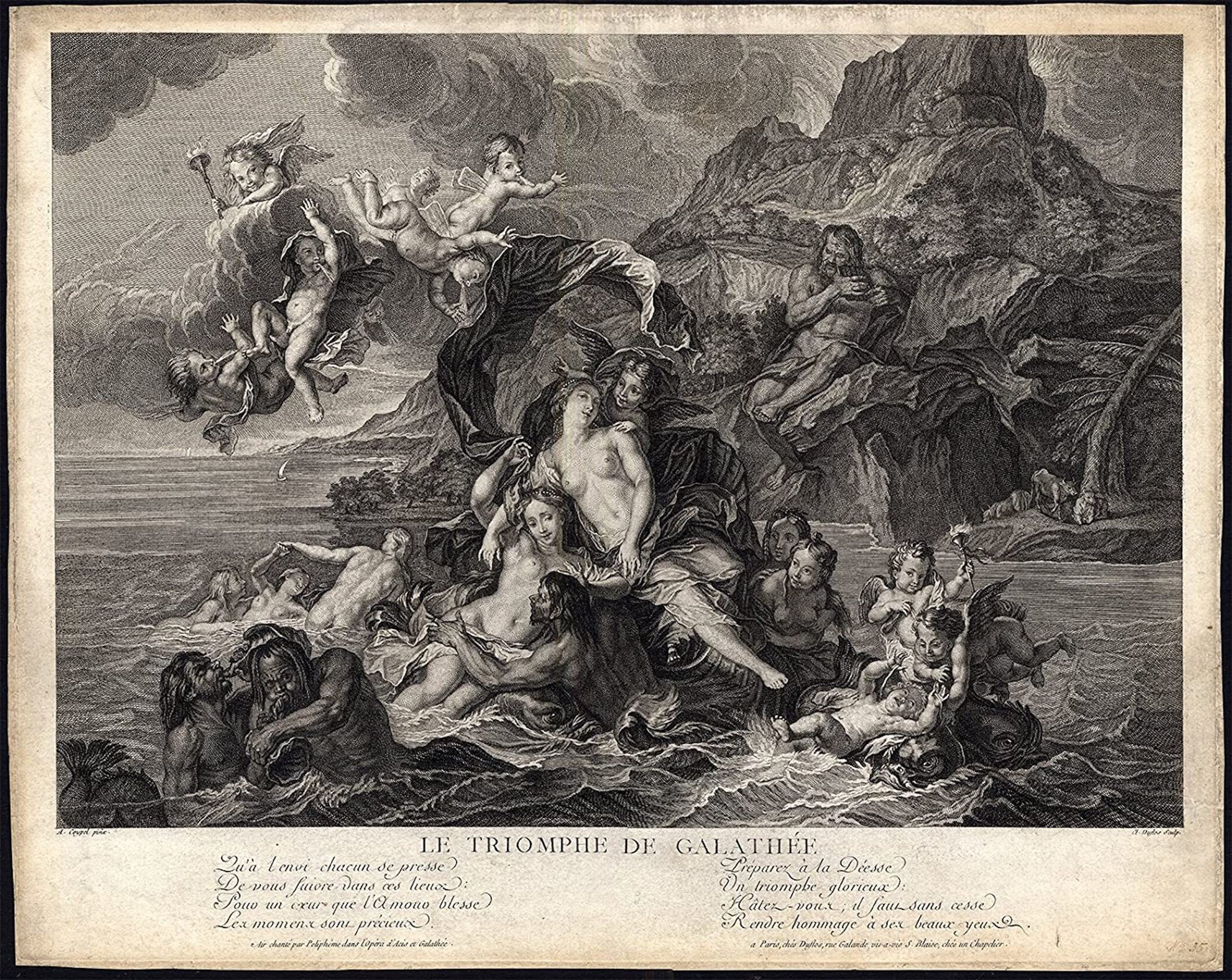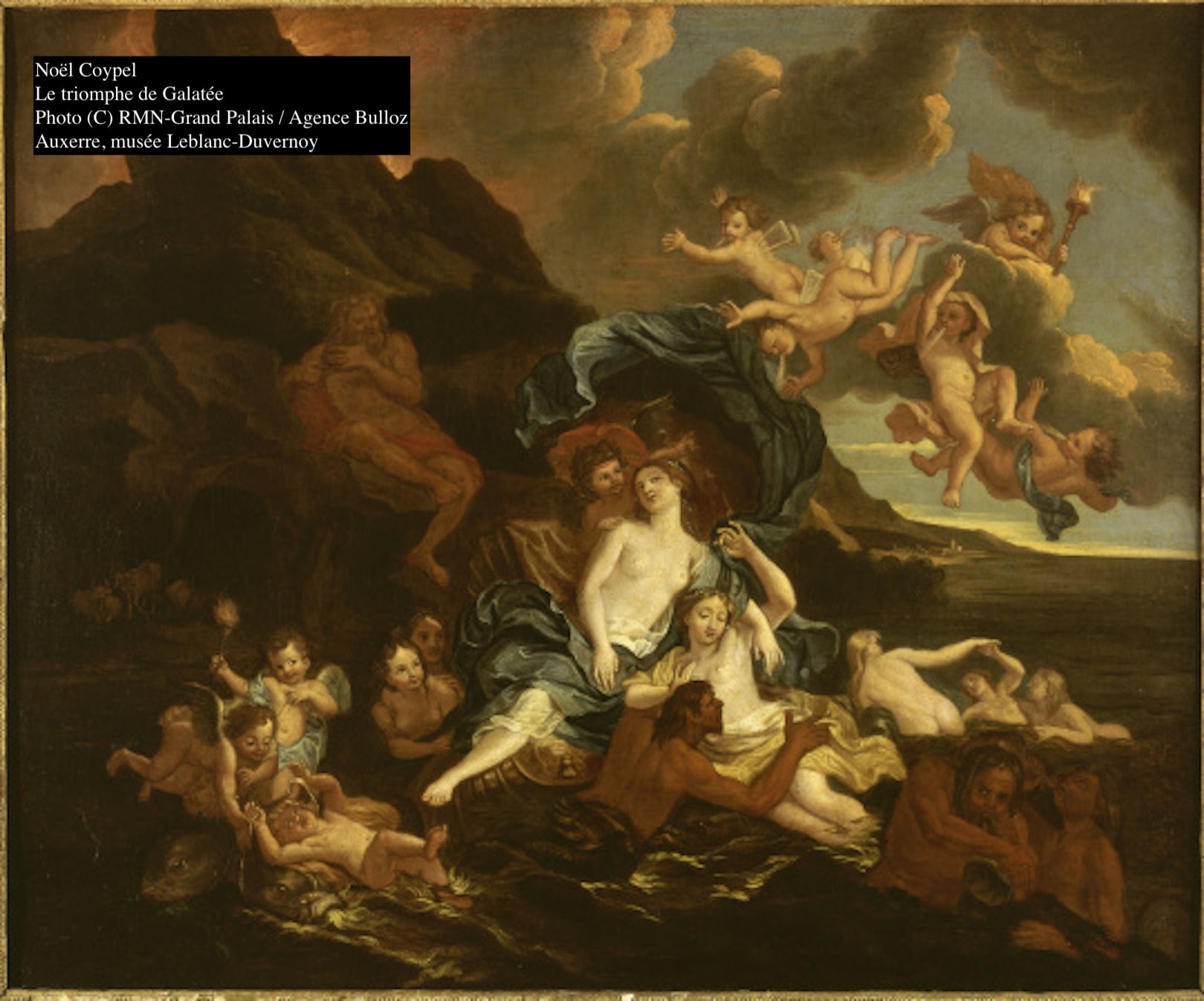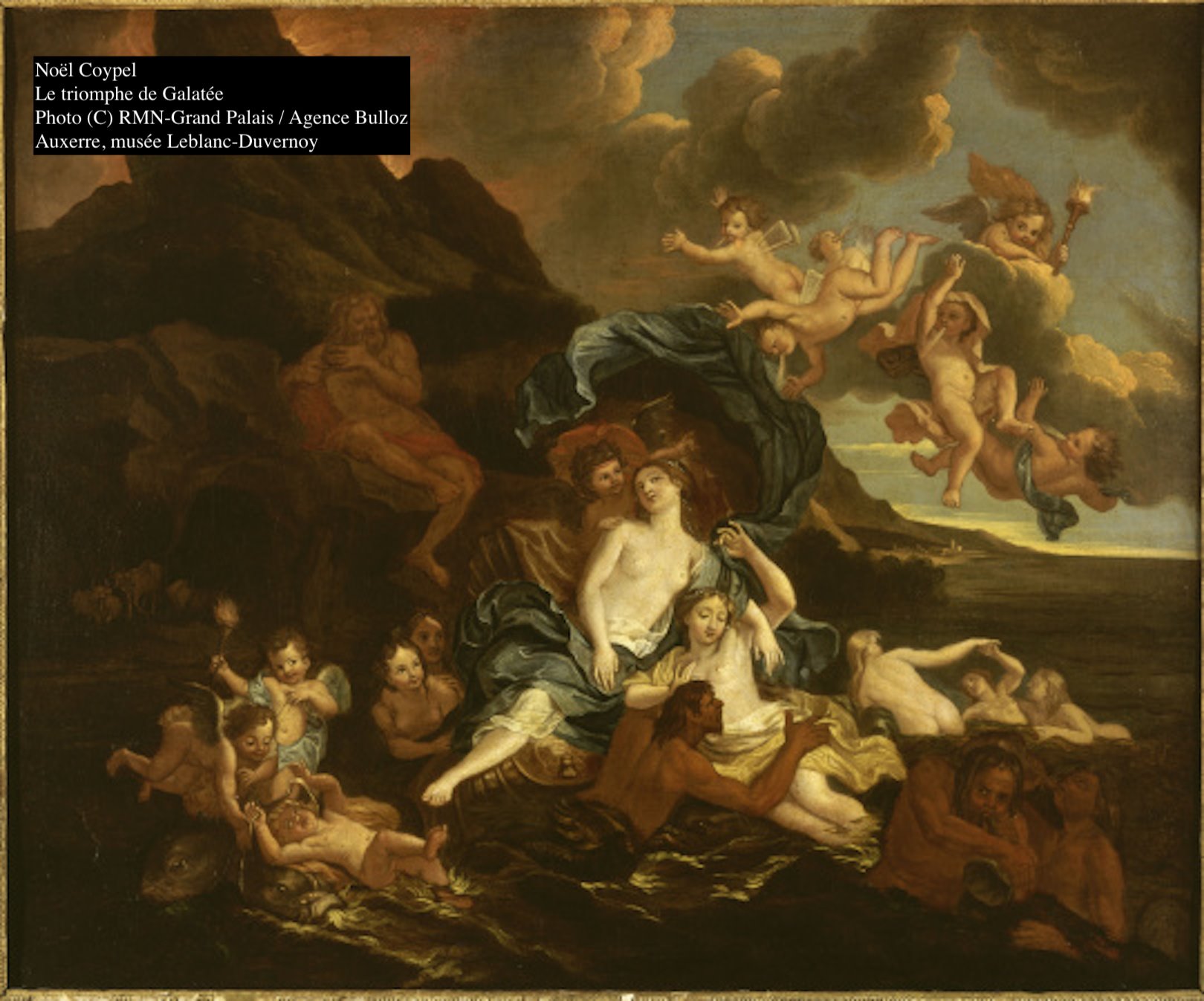Il trionfo di Galatea
Antoine Coypel (Paris 1661–1722), bottega di
Antoine Coypel (Parigi 1661 – Parigi 1722)
workshop of
The triumph of Galatea
oil painting on canvas
Dimensions: 69 x 99 cm.
with frame 81 x 121 cm.
The painting shows the apotheosis of the nymph Galatea, carried in triumph over the waters, an episode taken from ancient Latin culture (Ovid's Metamorphosis book 13), and resumed starting from the Renaissance.
The scene takes place in the sea, where Galatea is represented in the center of the work on a shell-shaped throne surrounded by sea creatures. Various characters surround the nymph and participate in her advance, including the Nereids, divinities of the sea, and the Tritons, also figures in the procession of the sea god Poseidon. A group of cupids witness the scene from the sky holding up a drape blown up by the wind. Sitting to observe the scene in the distance the giant Polyphemus on Mount Etna, madly in love with Galatea but unrequited, while playing the flute in honor of his beloved.
The painting is to be ascribed to the workshop of the painter Antoine Coypel (Paris 1661–1722), an exemplary exponent of French painting of the early eighteenth century and member of a dynasty of painters (he was the son of the painter Noël Coypel, and father of Charles-Antoine Coypel and Noël -Nicolas Coypel, both active in the paternal workshop) famous for his mythological compositions.
In the canvas in question all the typical components of the whimsical French master are found. The author remedies, in fact, much of the Italian painting of the 1600s, especially Roman and Bolognese: the newt that grabs the nymph under Galatea mentions the ways of Annibale Carracci in the Gallery of Palazzo Farnese, the cherubs playing on dolphins have a distant ancestry from Domenichino (for the draped mantle held gracefully by the amorino at the top), while the chromatic timbre of the entire composition reflects the light and luminous tones of Reni, Maratti and Albani. The great tradition of early Roman Baroque painting is relived by Coypel on a cultural basis that does not neglect even the influence of Rubens (especially in the Tritons).
The result is a communicative and immediately seductive painting, of great decoration, suitable, then as now, to embellish high-level bourgeois residences.
The source of our composition can be seen in the engraving '' Le triomphe de Galathee '', a model created by Coyper for a painting intended for Philip of Orleans, Duke of Chartres in 1695 (see details).
Although this painting has now been lost, several versions made by Coypel and his workshop still remain in France, including:
- an 18th century version (112 x 148 cm) at the Tessé Museum in Le Mans (see details):
- an 18th century version (made by his son Noël Coypel) (60 x 74 cm) at the Musée Leblanc-Duvernoy d'Auxerre,
- a version (102 x 137 cm) at the Bourges Museum with the title I Triumph of Amphitrite;
- a version (51 x 61 cm) at the Month of Saint-Germain-en-Laye;
- a version (72 x 56 cm) at the Massey Museum in Tarbes
- a version on a door kept in the Voiture Museum at the Compiègne castle.
The canvas is in excellent condition, the pictorial layer is very healthy. Conservative cleaning performed.
The work is accompanied by a gold-framed cell, not coeval.
For more information, please contact us.
Painting accompanied by a certificate of photographic authenticity in accordance with the law (FIMA - CINOA)



